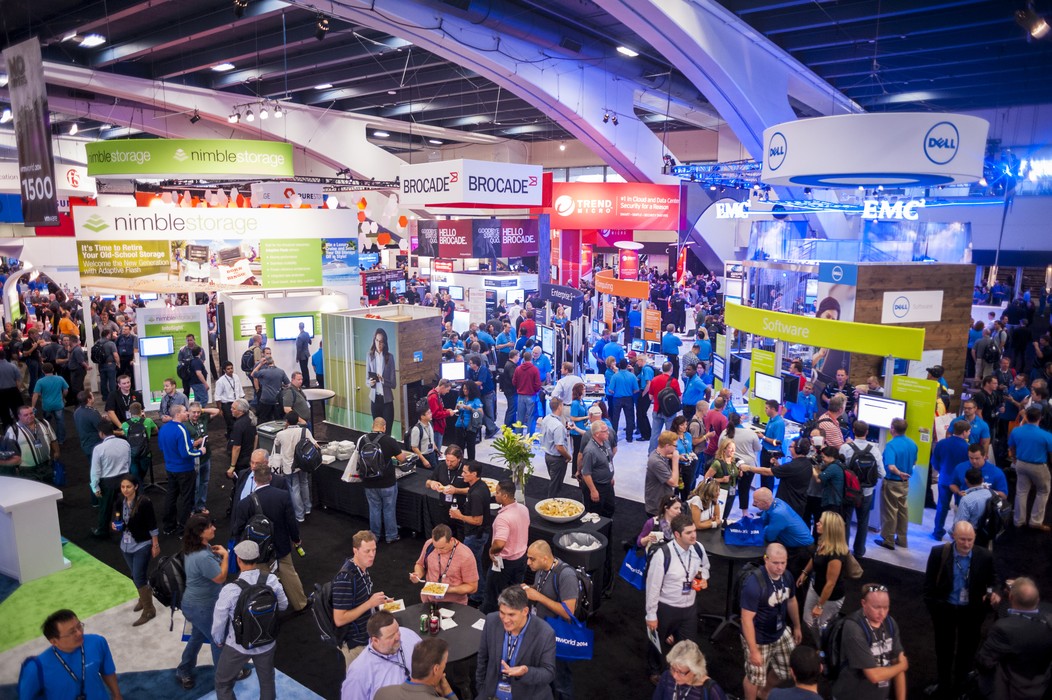Hedging its bets, VMware embraces brave new IT world: Page 2 of 3
By Edwin Yapp September 23, 2014
Protecting its turf

One of the key building blocks for VMware’s strategic shift to becoming a cloud player is its extended vCloud Hybrid offering, known today as vCloud Air.
First announced at VMworld in August 2013, VMware’s hybrid cloud was made commercially available the following month to customers and partners.
The cloud shift has been slow but steady for VMware. The company made some inroads into its existing customer base after nine months, but the momentum has been far less impressive.
VMware however was included in the much-cited industry report card – the Gartner Magic Quadrant for Cloud IaaS players – for the first time in May this year. In the annual who’s who of vendors in the cloud infrastructure space, VMware was positioned as a niche player with a ‘fair ability’ to execute its vision.
Gartner placed AWS as the undisputed leader in this space, followed by Microsoft, IBM [through its acquisition of SoftLayer], Google, CSC, Century Link and Verizon Terremark. Behind VMware were players such as Fujitsu, Hewlett-Packard, Joyent and Dimension Data.
Pointing to its strategy to offer vCloud Air hybrid cloud options to existing VMware customers, Gartner said this move reinforces its position in internal data centres while expanding its total addressable market.
“It wants to offer customers a consistent experience across VMware-based infrastructure, whether delivered as an on-premise virtualised environment or delivered as a cloud service,” read the report.
“vCloud Air has a solid set of basic features and pure infrastructure focus that is typical of vCloud Datacenter Service offerings. [Also], its vCloud Air Disaster Recovery service may be attractive to customers with on-premise VMware [gear].”
Challenges abound
Gartner however warned that vCloud Air currently has limited appeal to the business managers and application development leaders who are typically the key decision makers for cloud IaaS sourcing.
“VMware administrators in IT operations are the most likely champions of vCloud Air within a business, but they often prefer to build an internal private cloud, and they are also often the people that the business is trying to bypass by going to cloud IaaS.
“VMware needs to win over these administrators with regard to vCloud Air, but it also needs to develop a compelling value proposition for developers,” the Gartner report added.
The analyst firm also noted that VWware currently lacks an established operational track record and needs to build an ecosystem around vCloud Air.
However, it does have a strong channel in its broader business but system integrators, managed service providers, and value-added resellers need to learn to sell vCloud Air effectively and deliver additional value.
 Elaborating on the Magic Quadrant report, Michael Warrilow (pic), research director at Gartner, said that the hybrid cloud has been an area of interest for VMware for some time now.
Elaborating on the Magic Quadrant report, Michael Warrilow (pic), research director at Gartner, said that the hybrid cloud has been an area of interest for VMware for some time now.
“VMware is targeting a pretty specific area as it wants [to keep] the workloads that are on-premise, and in the private cloud, where it is a leader.
“It is also targeting those that are thinking of moving off-premise, as ideally, it would want its customers to stay running within VMware in their environment rather than moving off completely onto a public cloud,” he added.
Warrilow, who spoke to Digital News Asia (DNA) on the sidelines of VMworld 2014, said that while vCloud Air is a good proposition, it has not been very successful to this day.
Arguing that public cloud providers such as AWS have a better and more attractive proposition, and that Microsoft’s Azure IaaS has gone from strength to strength, winning over enterprises which are built from a base of traditional Windows apps, he said the task ahead for VMware now is to succeed in making its vCloud Air more accessible to developers rather than just VMware IT administrators.
He also believes that with Google Compute Engine strengthening itself and traditional players like IBM-SoftLayer getting their act together, it would be imperative for VMware to maintain its existing business and stop customers from putting their workloads onto the public cloud.
“Rebranding VCloud Air [from vCloud Hybrid Service] isn’t going to fix the problem as VMware needs to execute better,” Warrilow said. “It made it into the Magic Quadrant but it is still a niche player with limited success.
“I see vCloud Air as a good way to avoid complexity if you’re a VMware customer and if an enterprise didn’t see value of a full range of features the other cloud competitors are offering.”
Meanwhile, Forrester Research concurred with Gartner’s analysis and added that it is clear that VMware plans to battle it out in the public cloud space with all of the incumbents, touting its storage advantages over AWS and its compute advantages over Microsoft Azure.
“It’s very clear that VMware plans to aggressively compete with the leading public cloud platforms for all workloads, not just those already running on vSphere. Once a mediocre public cloud service, VMware has become a much stronger competitor.
“However, the key to success here is not being a few cents cheaper or a few operations per second faster; it will be the availability of a broad range of developer-friendly interfaces and services,” the research firm noted in its Quick Take: Breaking down VMworld 2014 report.
Next up: What's happening in Asia, and VMware's end-user computing efforts


